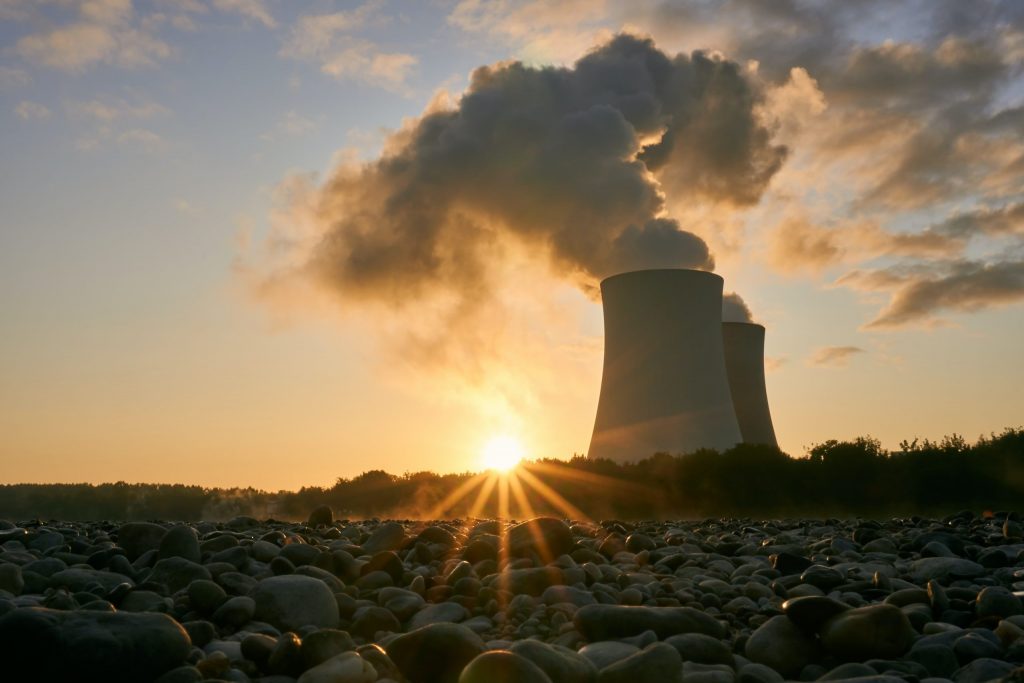South Africa’s reliance on coal always had an expiry date on it – Tim Cohen examines why Eskom looks like it was left in the fridge too long.
When you talk about coal in South Africa, it’s always best to start with some maths. And history. And geology. And then, of course, there is politics.
The geology is complicated because the time period involved runs into billions of years, and since we still argue about the significance of the Boer War, it’s easy to imagine why it gets complicated pretty quickly. But if you dust away mountains of history and conjecture, the simplistic explanation is that a large chunk of what is now the northern bit of South Africa consisted about a billion years ago of an unusually large, unusually ancient piece of crystalline basement rock, called the Kaapvaal Craton.
Its comparative stability over the next billion years created the foundation for a huge array of metals to gradually deposit through weathering. At the centre of the craton, there was a lake (or possibly the sea), and the rivers into the lake gathered and concentrated metals from the weathering process. Amazingly we now know there were six rivers running into the depression. The result was a stunning array of reefs of different types, including of course, the famous gold reef which happened to jut out of the ground near Johannesburg.
This all happened way before the rinderpest. Actually, it was even before the dinosaurs. Over the years, these metal concentrations were jumbled about, pulled apart, and covered by volcanic activity. The result is a massively complicated geological heritage. But what remains are bits here and there of these reefs, including in Mpumalanga and northern KZN, of large chunks of coal.
History
Ok, so now on to the history bit. South African modern history is remarkable for its power demands. From the moment diamonds were discovered and mining began, power requirements escalated beyond the capacity of low-intensity energy creators like wood, which indigenous people of the country had relied on for centuries.
The Kimberly diamond mines were the first to require coal for power, and in the early twentieth century, this was massively intensified by the gold mines on the reef. Coal mining became the critical adjunct to mining, and therefore a critical component of development and wealth creation in the country as a whole.
Fortunately, SA has lots of coal, and it’s embedded in comparatively thick seams, so it’s easy to mine. It’s also close to the surface. Because it was so crucial for the mining industry, but less profitable than the good stuff, government and the industry combined forces through the 1950s and later decades to collaborate in the mining of coal (the mining bit) and the conversion of coal into electricity (the government bit). Because it was essentially a combined effort, power stations were built very close to the mines. The miners got long-term contracts; the government, in the form of Eskom, got a stable supply of coal.
It all worked like a bomb. The result is what we have today; an array of mines and coal-fired power plants dotted around Mpumalanga. In the process, SA became almost totally dependent on coal-generated electricity. Eskom was producing electricity at world-beating rates, and incredibly, had excess capacity. It just made economic sense to rely on this cheap resource. Eskom became a symbol of national pride.
Mathematics
Ok, now the maths. Around the world, coal consists of about 36% of total fuel consumption. In SA, it constitutes about 77% of total fuel consumption. Part of this is forced, since SA doesn’t have huge rivers to turn into power projects or oil deposits to burn. But there was another factor too: coal became an important export item. Collaborative as always, the coal producers got together and built the Richards Bay Coal Terminal. SA is now the fourth-largest coal exporting country in the world.
SA had so much electricity and it was so cheap, whole industries were built on top of it, notably the aluminium smelting business, also based in Richards Bay. Aluminium burns at an extremely high temperature, so it requires mountains of power, almost as much as an entire city. But since SA has, or had, the power, we import alumina from Australia, i.e. the other side of the planet, drag it all the way here, and makes aluminium.
Politics
So how did this magnificently profitable and largely sensible system all go horribly, horribly wrong? Would you believe the answer is politics? And as so often happens with politics, all the intentions were good, and all the outcomes were bad.
In late 1990, the government was faced with a tricky choice. Eskom was, if anything, even more of a hero. The ANC had massively accelerated township electrification, providing people with the crucial ability to improve their lives, and to participate in modernity. However, the popularisation of electricity also had the consequence of making it subject to political forces. A regulator, Nersa, was established and for years Nersa recommended below-inflation increases, with one ear out to the political consequences of doing otherwise.
But all the power stations built in the 1960s and 1970s were getting a bit long in the tooth. The then Thabo Mbeki led-government was being pressured to part-privatise Eskom – and bidders were lining up around the block. But Mbeki was also under pressure from his left-wing, and consequently, it never had the courage to actually press the button. Under the influence of the Communist Party members of the cabinet, notably Alec Erwin, Mbeki backed off.
Instead, the government decided to go what might be called “the China route” – big government taking on big projects for the notional good of all. It was a fateful, disastrous, and ultimately calamitous decision. Instead of utilising the private sector’s balance sheet, Eskom was instructed to use its own, and to commission two huge power plants –both coal-fired, the now-famous Medupi and Kusile plants.
Government took the decision in the face of an uncomfortable truth: global warming. At the time, the global climate emergency was just becoming a topic. In fairness, science was far from clear at that time. Yet, it was obvious even then that coal energy was climate destructive. Now, it is globally acknowledged as the most toxic solution and mining companies are falling over themselves to jettison their coal assets.
Choices
So why, you may ask, did the government not consider other options? Part of the problem was just bad luck. When it was making the decision, the all-in costs of solar and wind projects were perhaps twice as expensive as what Eskom was producing. Government could not know then how much cheaper photovoltaic and wind-powered electricity would eventually become.
But even then, the trends were becoming clear, and it would not have been imprudent at the time to at least hedge the bets a bit. But this would run counter to the interventionist instincts of the lovers of grand, government-owned Soviet-style industry that dominated the Mbeki regime.
The rest we pretty much know. Eskom took charge of the project management of Medupi and Kusile, and costs just exploded, despite being massive in the first place. Project management was poor, and corruption was rife, starting not surprisingly with one of the founding contracts themselves going to the ANC’s then corporate guise Chancellor House. All kinds of BEE requirements were placed on the project, which made it more difficult and more expensive. To make it worse, the companies involved did shoddy work.
And to compound things further, government’s relationship with the mining industry soured. It was always assumed that the mining companies would fall over themselves to build new coal mines. But government kept offering terms that were just too risky, so they never settled. Eskom had become increasingly reliant on smaller-scale, much more expensive coal producers, who themselves have become a political force.
Broke
In the meantime, Eskom is now effectively bankrupt, with debts so large it is totally reliant on taxpayer bailouts. Its debt is around R430-billion and it announced a R20-billion loss last year.
In a desperate attempt to claw back some income, electricity has effectively quadrupled in price since the Medupi and Kusile power stations were commissioned, rising from around 17c per kilowatt-hour to 115c per kilowatt-hour between 2006 and 2021.
These increases have threatened the viability of huge chunks of the mining industry, and the increased prices have led to higher rates of municipal abscondence. Tragically, Eskom is also producing about 20% less electricity than it did in 2006.
Who do we blame for this? Lots of people played a role. The culpability lies with Mbeki for not having the courage to privatise Eskom when he could have; with Erwin for pressing for a coal-centred, big producer option; the ANC for trying to profit out of the construction contracts; with the Zuma government for allowing corruption to reach pandemic levels; with a host of managers and board members who were generally incompetent; with the private sector construction companies, many of whom had their hands in the cookie jar. The list just goes on and on.
So, what does SA do now? The uncomfortable answer is simple, just soldier on. Learn from the mistakes. Try to fix the disasters. And, most of all, build lots more sustainable projects. Then maybe in a few decades, this can all be fixed.
And by the way, the effective rate for solar power spread across the life of a system is now around $.06/kWh, and declining. The average cost for conventional energy is $0.12/kWh and rising.
- Tim Cohen is editor of Business Maverick and a former editor of Business Day and the Financial Mail.




